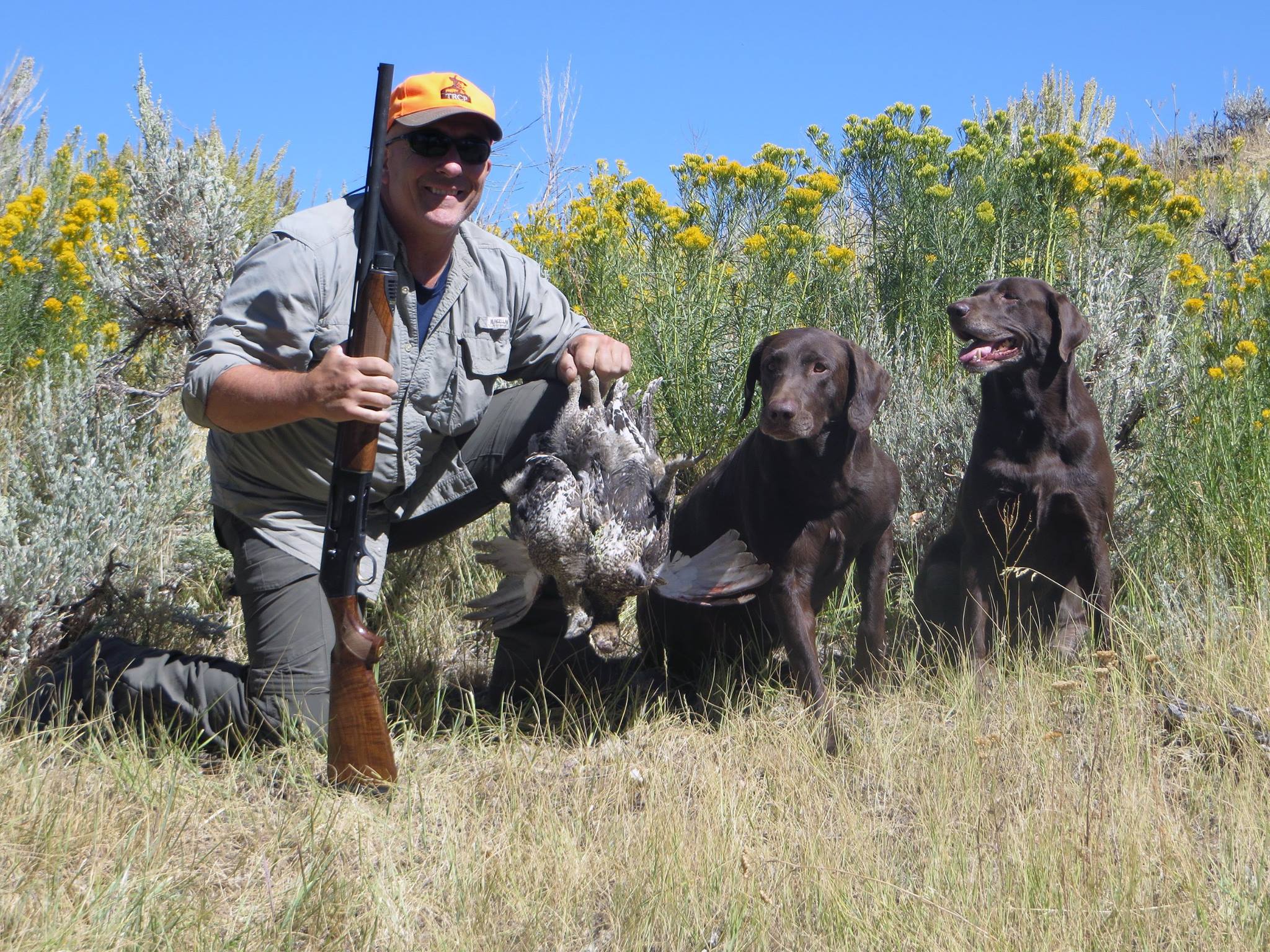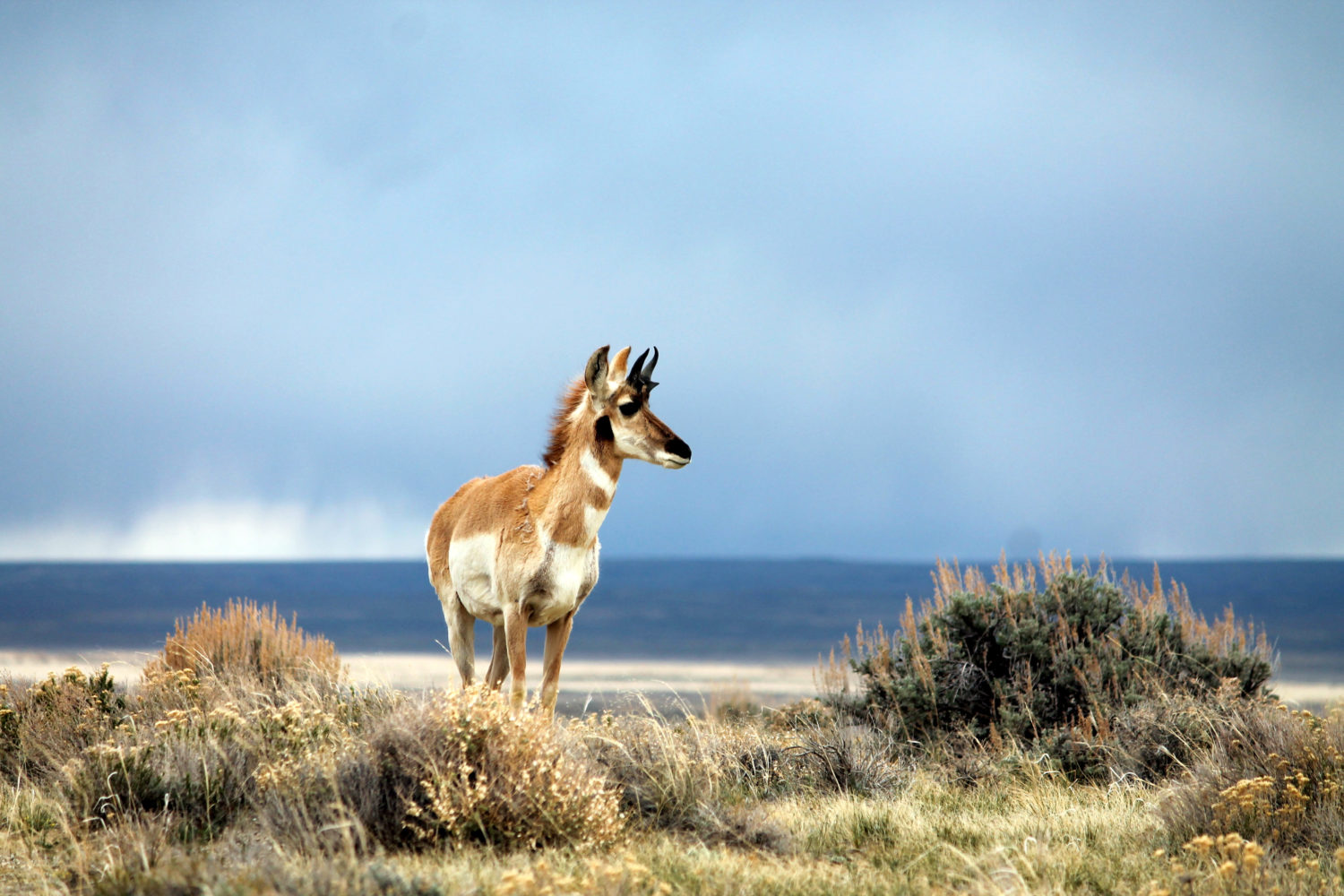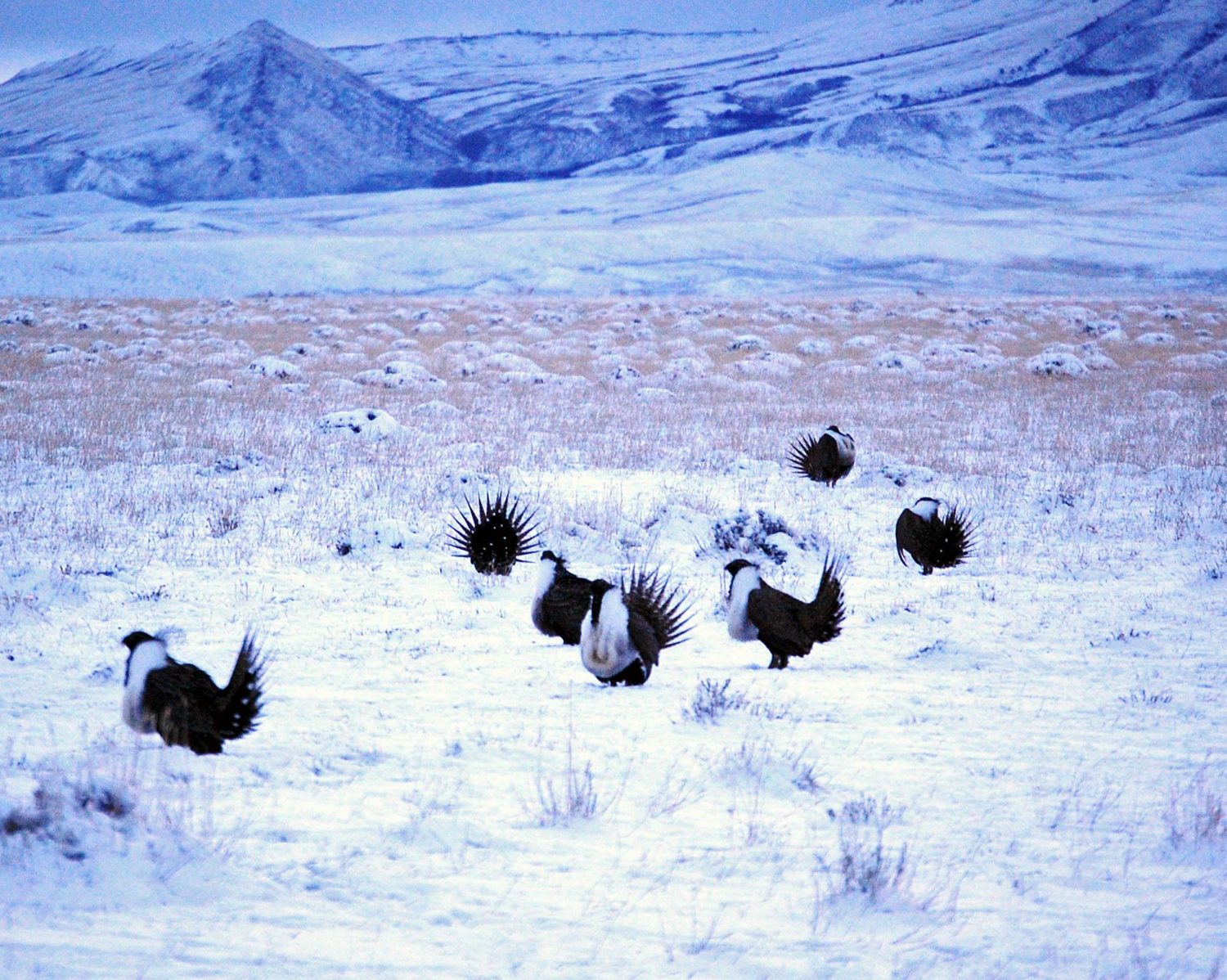From signs of decline decades ago to a definitive moment for sagebrush country—catch up and take action
I had hiked for what seemed like hours and endless miles through the central Wyoming sagebrush, working my dogs in every place I’d ever found sage grouse in years past. I was a bit dumbfounded as these areas usually produced birds in fairly short order, but it seemed that all those honey holes were dry this year. I wondered what happened, as I kneeled down and poured some water into a bowl for the dogs and then took a sip myself.
All of a sudden, my chocolate lab, Deke, perked up his ears, began wagging his tail, and briskly walked toward a line of sage that we had yet to push through about 20 yards away. Apparently, the wind had shifted into our faces, and he was finally on some birds. No sooner had I grabbed my 20-gauge when a half-dozen sage grouse erupted from the brush. I dropped one, fired again and missed, and then hit a second bird with my last round. Just like that, we were done for the day—and the season, as it turned out. There were no birds the next day, no matter how far we wandered.
That hunt took place in 2012, just as I had started working in the complex world of policy and management of the greater sage grouse with the TRCP. It was also during a crippling drought, the likes of which the West hadn’t experienced for several years.
I wasn’t the only hunter to get skunked, either. The second-lowest number of male sage grouse since 1965 were counted on their breeding grounds that year, following decades of sagebrush being degraded or lost to urbanization, crop conversion, energy development, fire, and invasive weeds. In total, the West had lost nearly 50 percent of its sagebrush country by the new millennium, and grouse numbers followed suit, declining about one percent each year on average since the mid-1960s.

A lot has happened since then. Though state agency biologists put forth a range-wide conservation strategy in 2006, it took a petition to list the species—and ultimately a court order mandating that the U.S. Fish and Wildlife Service determine whether the species warranted protections under the Endangered Species Act by September 2015—to send most states and federal agencies into action.
Wyoming led the way in this effort, bringing multiple interest groups together to craft a balanced approach to conservation and knowing full well that a listing would cripple the state and much of the West. As the September 2015 deadline approached, 11 Western states had all developed some sort of conservation plan for greater sage grouse, and the Bureau of Land Management and U.S. Forest Service finalized their own plans for conservation on public lands just before the USFWS’s final decision was announced.
Private landowners jumped in, too. The Natural Resource Conservation Service, under the U.S. Department of Agriculture, created the Sage Grouse Initiative to help landowners get technical advice on tailoring their operations to help grouse and their rangeland and poured hundreds of millions of dollars into habitat improvements, like removing invasive trees to improve grass and forb (sage grouse food) production. It was mutually beneficial for ranchers and the iconic dancing birds—as one rancher from Oregon has famously said, “What’s good for the bird is good for the herd.”

When this historic collaborative work paid off, and the Department of Interior and Fish and Wildlife Service announced that the range-wide population of greater sage grouse did not warrant protections under the Endangered Species Act, a collective sigh of relief could be felt across the West.
I’ve been a professional wildlife biologist for almost 30 years, and for me and most of my colleagues it is clear that the work to benefit sage grouse over the last several years has been the greatest landscape-scale conservation effort undertaken in modern times. Steve Williams, president of the Wildlife Management Institute and a former U.S. Fish and Wildlife Service director, has stated that the unprecedented and extraordinary collaboration we’ve seen sets forth a model for the future of conservation in America.
But the work has only just begun. One thing we all need to keep in mind is that the decision to keep sage grouse off a threatened or endangered species list was predicated on the promise of implementing both federal and state conservation plans simultaneously and without interruption, all while conservation efforts on private lands continue. No single effort can stand alone to deliver the necessary conservation benefits or regulatory certainty to avoid a future listing.
But major amendments and lengthy disruptions could drastically alter the course for habitat conservation and undo years of hard work—years that sage grouse don’t have to waste.

There’s simply no denying that long-term conservation measures will benefit everyone in the end.
So why do we think it’s so important for sportsmen and women to understand all of this, even after the not warranted decision for sage grouse was issued? We depend on public lands for quality habitat that allows fish and wildlife populations to thrive. And we know that sagebrush provides habitat for more than 350 species of plants and wildlife, including many beyond sage grouse, like pronghorns, wild trout, mule deer, and elk.
Major disruptions in #sagegrouse plans could drastically alter the course for habitat #conservation.
Click To Tweet
These iconic species define the Western landscape and our days afield. Meanwhile, the extraordinary outdoor recreation opportunities in sagebrush country help drive spending in our local communities, supporting the $887-billion outdoor recreation economy and more than 7.5 million jobs. These pursuits mean big business, and the places where we are free to hunt and fish define us as Americans.
This is why we need sportsmen and women to tell Secretary Zinke to keep this historic collaborative conservation effort moving forward, while continuing to work with the states and all stakeholders on thoughtful improvements. Please take a few minutes to share your story and urge your decision makers to allow landmark conservation plans to work as they were intended. It is critical to our outdoor heritage, economy, and Western way of life.
The post Here Are the CliffsNotes on Why Everyone’s Still Talking About Sage Grouse appeared first on Theodore Roosevelt Conservation Partnership.
Powered by WPeMatico